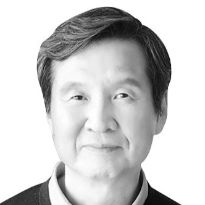Single-person households

The author is an emeritus professor of sociology at Ajou University.
The number of single-person households is growing rapidly. According to the 2020 Census by Statistics Korea, it stood at a whopping 6.64 million last year, which is 31.7 percent of the 20.93 million general households. Before 2005, four-person households were dominant. In 2010, two-person households became the mainstream, and since 2015, Korean society has been moving fast toward two-person households. Such a trend will get accelerated down the road. The statistics office projects the ratio of single-person households to increase to 37.1 percent of the total by 2045.
The swift demographic change mostly resulted from changes in the attitudes of people in their 20s and 30s toward marriage and from the growing need for them to live apart from their family to study and find a job. Another increase in the number of single-person households among senior citizens stemmed from the increasing number of cases of people living alone after the death of their spouse in an age of increased life expectancy. The increase in the number of single-person households is also attributed to an increase in divorce in Korea today.
As of 2020, 19.1 percent of single-person households were twenty-somethings, followed by septuagenarians and those other (18.1 percent) and the people in their 30s (16.8 percent). The ratio of single-person households also varies on a regional basis. For instance, it is the highest in Daejeon City (36.3 percent) followed by Seoul (34.9 percent) and Gyeonggi Province (the lowest 27.6 percent).
Nationwide, approximately 80 percent of single-person households are concentrated in urban areas. About 2.4 million people in their 20s and 30s are 35.9 percent of all single-person households ,while 1.66 million people above the age of 64 account for 25 percent.
Korea’s ultralow birthrate and rapidly aging population are expected to further raise the ratio of the elderly in single-households in the country.
Since single-person households have become a major type of living, the government needs to change existing policies drawn up for three-to-four member households. First of all, it should revise its housing policy and dramatically increase the number of small apartments for single-person households. At the same time, it must readjust its housing and welfare policies so that single-person households do not face disadvantages.
The government must urgently provide stable housing for the people in their 20s and 30s in particular, the age groups with the most single-person households, because they are the most vulnesrable group in economical terms. It must reinforce financial support for the group, including subsidizing rents, as well as devise policies to improve their living conditions.
Another group the government must care for is single-person households headed by senior citizens suffering from economic and health handicaps. To achieve that goal, the government must establish an integrated caring system to enhance housing and medical services on the regional and national level.
Some local governments with high ratios of single-person households already respond to such needs by setting up policy teams tailored for the task. For instance, they offer home management services for them, assign security guards for single-households headed by women and accompany the aged people when they go outside.
Single-person households are also vulnerable to isolation and alienation from the rest of the society. The emergence of single-person households as a dominant form of living poses a serious threat to both individuals and society. After former Prime Minister Theresa May defined loneliness as a disease, the British government created a new department devoted to tackling the problem of social loneliness. That offers precious lessons to Korea. The time has come for the government to pay attention to the increasing single-person households so that they are not left behind.
Translation by the Korea JoongAng Daily staff.










with the Korea JoongAng Daily
To write comments, please log in to one of the accounts.
Standards Board Policy (0/250자)